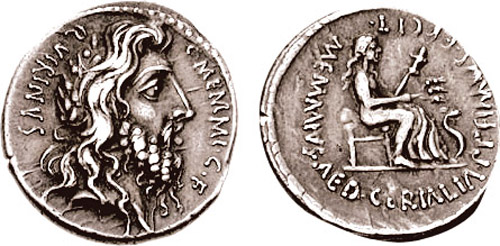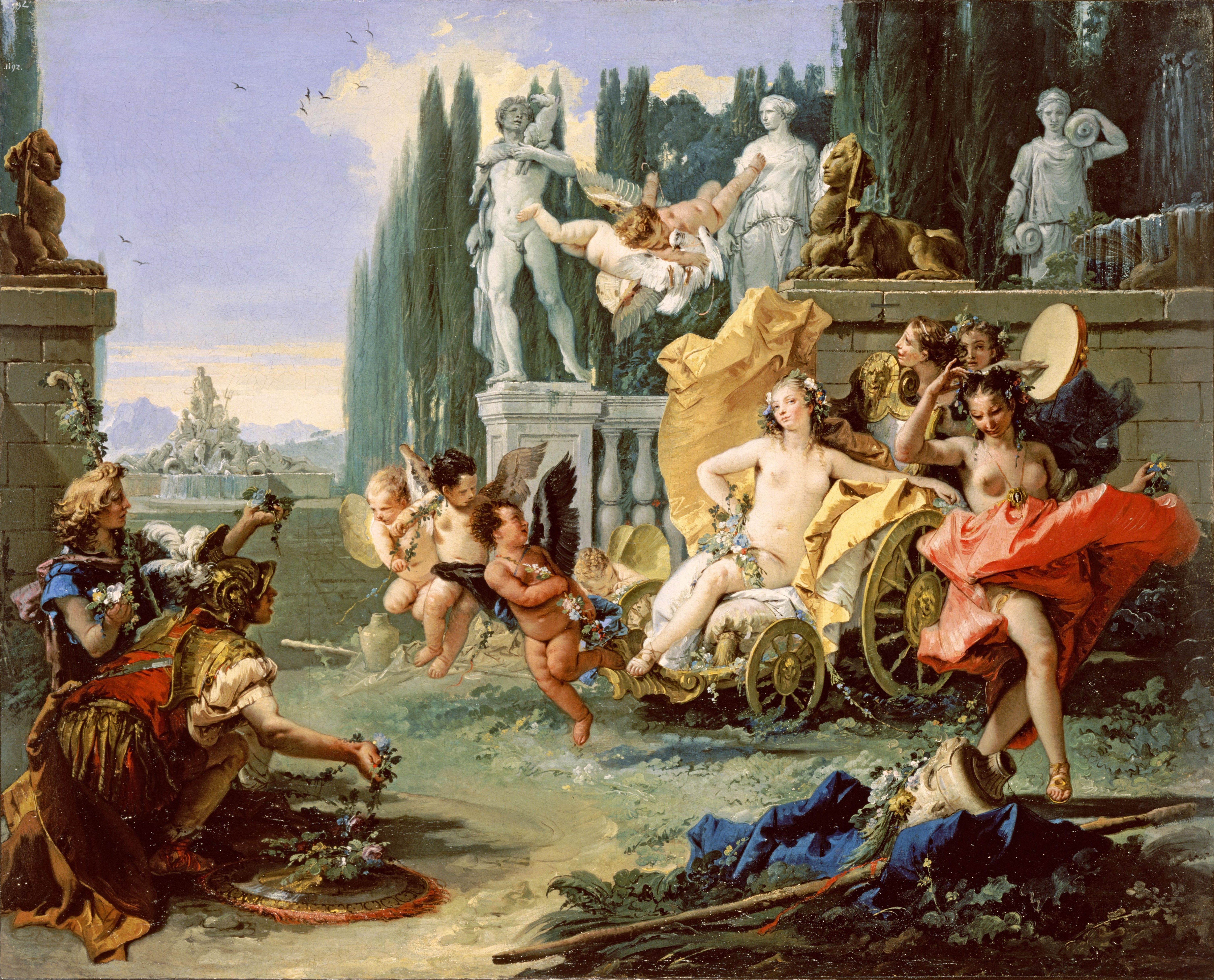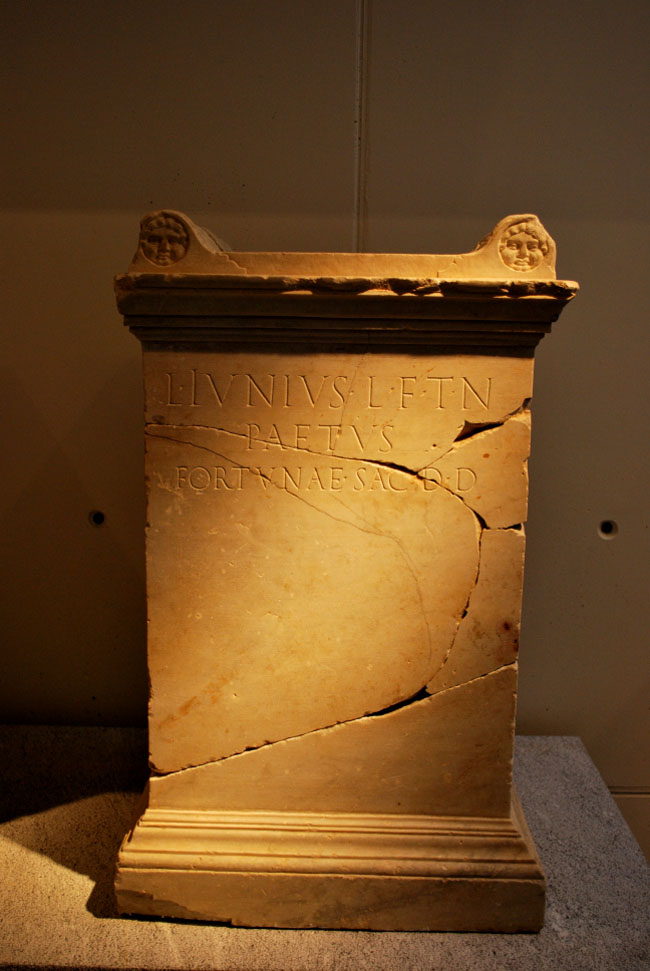|
Parilia
upright=1.5, ''Festa di Pales, o L'estate'' (1783), a reimagining of the Festival of Pales by Joseph-Benoît Suvée The Parilia is an ancient Roman festival of rural character performed annually on 21 April, aimed at cleansing both sheep and shepherd. It is carried out in acknowledgment to the Roman deity Pales, a deity of uncertain gender who was a patron of shepherds and sheep.''The Cambridge Ancient History 2nd Ed. Vol. X: The Augustan Empire 43 BC – AD 69''. Cambridge University Press. Great Britain: 1996. pp. 816-817 Ovid describes the Parilia at length in the ''Fasti'', an elegiac poem on the Roman religious calendar, and implies that it predates the founding of Rome, traditionally 753 BC, as indicated by its pastoral, pre-agricultural concerns. During the Republic, farming was idealized and central to Roman identity, so the festival took on a more generally rural character. Increasing urbanization caused the rustic Parilia to be reinterpreted rather than abandoned, ... [...More Info...] [...Related Items...] OR: [Wikipedia] [Google] [Baidu] |
October Horse
In Religion in ancient Rome, ancient Roman religion, the October Horse (Latin ''Equus October'') was an animal sacrifice to Mars (mythology), Mars carried out on October 15, coinciding with the end of the Roman agriculture, agricultural and military campaigning season. The rite took place during one of three horse-racing Roman festivals, festivals held in honor of Mars, the others being the two Equirria on February 27 and March 14. Two-horse Chariot racing, chariot races (''Biga (chariot), bigae'') were held in the Campus Martius, the area of Rome named for Mars, after which the right-hand horse of the winning team was transfixed by a Mars (mythology)#The spear of Mars, spear, then sacrificed. The horse's head ''(caput)'' and tail (''cauda'') were cut off and used separately in the two subsequent parts of the ceremonies: two neighborhoods staged a fight for the right to display the head, and the freshly bloodied ''cauda'' was carried to the Regia for sprinkling the Sacred fire of ... [...More Info...] [...Related Items...] OR: [Wikipedia] [Google] [Baidu] |
Fordicidia
In ancient Roman religion, the Fordicidia was a festival of fertility, held on the Ides of April (April 15), that pertained to farming and animal husbandry. It involved the sacrifice of a pregnant cow to Tellus, the ancient Roman goddess of the Earth, in proximity to the festival of Ceres ( Cerealia) on April 19. Mary Beard, J.A. North, and S.R.F. Price, ''Religions of Rome: A History'' (Cambridge University Press, 1998), vol. 1p. 45./ref> On the Roman religious calendar, the month of April ''(Aprilis)'' was in general preoccupied with deities who were female or ambiguous in gender, opening with the Feast of Venus on the Kalends. Several other festivals pertaining to farm life were held in April: the Parilia, a feast of shepherds, on April 21; the Robigalia on April 25, to protect crops from blight; and the Vinalia, one of the two wine festivals on the calendar, at the end of the month. Of these, the Fordicidia and Robigalia are likely to have been of greatest antiquity. Will ... [...More Info...] [...Related Items...] OR: [Wikipedia] [Google] [Baidu] |
Romulus
Romulus () was the legendary founder and first king of Rome. Various traditions attribute the establishment of many of Rome's oldest legal, political, religious, and social institutions to Romulus and his contemporaries. Although many of these traditions incorporate elements of folklore, and it is not clear to what extent a historical figure underlies the mythical Romulus, the events and institutions ascribed to him were central to the myths surrounding Rome's origins and cultural traditions. Traditional account The myths concerning Romulus involve several distinct episodes and figures, including the miraculous birth and youth of Romulus and his twin brother, Remus; Remus' murder and the founding of Rome; the Rape of the Sabine Women, and the subsequent war with the Sabines; a period of joint rule with Titus Tatius; the establishment of various Roman institutions; the death or apotheosis of Romulus, and the succession of Numa Pompilius. Romulus and Remus According to Roman my ... [...More Info...] [...Related Items...] OR: [Wikipedia] [Google] [Baidu] |
Pales
In ancient Roman religion, Pales was a deity of shepherds, flocks and livestock. Regarded as male by some sources and female by others, ''Pales'' can be either singular or plural in Latin, and refers at least once to a pair of deities. Pales' festival, called the Parilia, was celebrated on April 21. Cattle were driven through bonfires on this day. Pales and the Parilia were strictly connected to the foundation of Rome which took place on the day of their festival. Marcus Atilius Regulus built a temple to Pales in Rome following his victory over the Salentini in 267 BC. It is generally thought to have been located on the Palatine Hill, but, being a victory monument, it may have been located on the route of the triumphal procession, either on the Campus Martius or the Aventine Hill. According to the '' Fasti Antiates Maiores'', there was a festival for "the two Pales" (''Palibus duobus'') on July 7, probably to mark the dedication of this temple. Scholarship has suggested th ... [...More Info...] [...Related Items...] OR: [Wikipedia] [Google] [Baidu] |
Fasti (Ovid)
The ''Fasti'' ( la, Fāstī , "the Calendar"), sometimes translated as ''The Book of Days'' or ''On the Roman Calendar'', is a six-book Latin poem written by the Roman poet Ovid and published in AD 8. Ovid is believed to have left the ''Fasti'' incomplete when he was exiled to Tomis by the emperor Augustus in 8 AD. Written in elegiac couplets and drawing on conventions of Greek and Latin didactic poetry, the ''Fasti'' is structured as a series of eye-witness reports and interviews by the first-person ''vates'' ("poet-prophet" or "bard") with Roman deities, who explain the origins of Roman holidays and associated customs—often with multiple aetiologies. The poem is a significant, and in some cases unique, source of fact in studies of religion in ancient Rome; and the influential anthropologist and ritualist J.G. Frazer translated and annotated the work for the Loeb Classical Library series. Each book covers one month, January through June, of the Roman calendar, and was wri ... [...More Info...] [...Related Items...] OR: [Wikipedia] [Google] [Baidu] |
Celer (builder)
According to Ovid's description of the founding of Rome by Romulus (Fasti IV.809 ff.), Celer was the name of an otherwise unknown foreman, appointed by Romulus to oversee the building of Rome's first walls. Ovid, perhaps in part to exonerate the emperor Augustus' great forefather, relates how it was actually this foreman Celer (not Romulus) who struck down Remus for jumping over the wall in its early stages in an act of mockery towards his brother's attempt to fortify the new city. Romulus is portrayed by the poet as putting on a brave front at Remus' funeral, stoically suppressing his tears and grief in order to be a role model for his people. Ovid relates the account in connection with his description of the Roman festival of Parilia (April 21). Ovid also provides additional allusions to Celer's killing of Remus further on in the ''Fasti'', in connection with the festival of Lemuria (Fasti V - May 9). This may also be the same "Celer" who Valerius Antias claims served as the ... [...More Info...] [...Related Items...] OR: [Wikipedia] [Google] [Baidu] |
Roman Festival
Festivals in ancient Rome were a very important part in Roman religious life during both the Republican and Imperial eras, and one of the primary features of the Roman calendar. ''Feriae'' ("holidays" in the sense of "holy days"; singular also ''feriae'' or ''dies ferialis'') were either public ''(publicae)'' or private ''( privatae)''. State holidays were celebrated by the Roman people and received public funding. Games ''( ludi)'', such as the Ludi Apollinares, were not technically ''feriae'', but the days on which they were celebrated were '' dies festi'', holidays in the modern sense of days off work. Although ''feriae'' were paid for by the state, ''ludi'' were often funded by wealthy individuals. ''Feriae privatae'' were holidays celebrated in honor of private individuals or by families. This article deals only with public holidays, including rites celebrated by the state priests of Rome at temples, as well as celebrations by neighborhoods, families, and friends held ... [...More Info...] [...Related Items...] OR: [Wikipedia] [Google] [Baidu] |
Fasti (poem)
The ''Fasti'' ( la, Fāstī , "the Calendar"), sometimes translated as ''The Book of Days'' or ''On the Roman Calendar'', is a six-book Latin poem written by the Roman poet Ovid and published in AD 8. Ovid is believed to have left the ''Fasti'' incomplete when he was exiled to Tomis by the emperor Augustus in 8 AD. Written in elegiac couplets and drawing on conventions of Greek and Latin didactic poetry, the ''Fasti'' is structured as a series of eye-witness reports and interviews by the first-person '' vates'' ("poet-prophet" or "bard") with Roman deities, who explain the origins of Roman holidays and associated customs—often with multiple aetiologies. The poem is a significant, and in some cases unique, source of fact in studies of religion in ancient Rome; and the influential anthropologist and ritualist J.G. Frazer translated and annotated the work for the Loeb Classical Library series. Each book covers one month, January through June, of the Roman calendar, and wa ... [...More Info...] [...Related Items...] OR: [Wikipedia] [Google] [Baidu] |
Vesta (mythology)
Vesta () is the virgin goddess of the hearth, home, and family in Roman religion. She was rarely depicted in human form, and was more often represented by the fire of her temple in the Forum Romanum. Entry to her temple was permitted only to her priestesses, the Vestal Virgins, who guarded particular sacred objects within, prepared flour and sacred salt (''mola salsa'') for official sacrifices, and tended Vesta's sacred fire at the temple hearth. Their virginity was thought essential to Rome's survival; if found guilty of inchastity, they were punished by burial alive. As Vesta was considered a guardian of the Roman people, her festival, the ''Vestalia'' (7–15 June), was regarded as one of the most important Roman holidays. During the ''Vestalia'' privileged matrons walked barefoot through the city to the temple, where they presented food-offerings. Such was Vesta's importance to Roman religion that following the rise of Christianity, hers was one of the last non-Christian ... [...More Info...] [...Related Items...] OR: [Wikipedia] [Google] [Baidu] |
Glossary Of Ancient Roman Religion
The vocabulary of ancient Roman religion was highly specialized. Its study affords important information about the religion, traditions and beliefs of the ancient Romans. This legacy is conspicuous in European cultural history in its influence on later juridical and religious vocabulary in Europe, particularly of the Western Church. This glossary provides explanations of concepts as they were expressed in Latin pertaining to religious practices and beliefs, with links to articles on major topics such as priesthoods, forms of divination, and rituals. For theonyms, or the names and epithets of gods, see List of Roman deities. For public religious holidays, see Roman festivals. For temples see the List of Ancient Roman temples. Individual landmarks of religious topography in ancient Rome are not included in this list; see Roman temple. __NOTOC__ Glossary A abominari The verb ''abominari'' ("to avert an omen", from ''ab-'', "away, off," and ''ominari'', "to pronounce on ... [...More Info...] [...Related Items...] OR: [Wikipedia] [Google] [Baidu] |
Julius Caesar
Gaius Julius Caesar (; ; 12 July 100 BC – 15 March 44 BC), was a Roman general and statesman. A member of the First Triumvirate, Caesar led the Roman armies in the Gallic Wars before defeating his political rival Pompey in a civil war, and subsequently became dictator from 49 BC until his assassination in 44 BC. He played a critical role in the events that led to the demise of the Roman Republic and the rise of the Roman Empire. In 60 BC, Caesar, Crassus and Pompey formed the First Triumvirate, an informal political alliance that dominated Roman politics for several years. Their attempts to amass power as were opposed by the within the Roman Senate, among them Cato the Younger with the frequent support of Cicero. Caesar rose to become one of the most powerful politicians in the Roman Republic through a string of military victories in the Gallic Wars, completed by 51 BC, which greatly extended Roman territory. During this time he both invaded Britain an ... [...More Info...] [...Related Items...] OR: [Wikipedia] [Google] [Baidu] |
Temple Of Venus And Roma
The Temple of Venus and Roma (Latin: ''Templum Veneris et Romae'') is thought to have been the largest temple in Ancient Rome. Located on the Velian Hill, between the eastern edge of the Forum Romanum and the Colosseum, in Rome, it was dedicated to the goddesses '' Venus Felix'' ("Venus the Bringer of Good Fortune") and '' Roma Aeterna'' ("Eternal Rome"). The building was the creation of the emperor Hadrian and construction began in 121. It was officially inaugurated by Hadrian in 135, and finished in 141 under Antoninus Pius. Damaged by fire in 307, it was restored with alterations by the emperor Maxentius. History The temple was erected on the remains of Emperor Nero's Domus Transitoria, and subsequent Domus Aurea, and first the Colossus of Nero was moved and placed near the amphitheatre, which shortly afterwards became known as the Colosseum. An elaborate domed rotunda from the Domus Transitoria is still intact beneath the temple, an extravagant architectural design which ... [...More Info...] [...Related Items...] OR: [Wikipedia] [Google] [Baidu] |



%2C_RP-P-1986-363.jpg)





